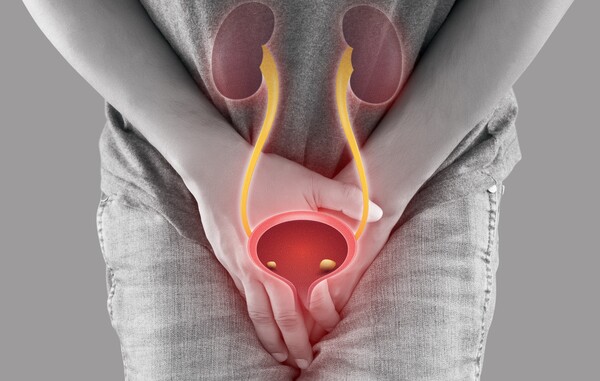Ha Yun-sok, Professor the Department of Urology at Kyungpook National University Hospital

Anatomy and types of bladder cancer
The bladder is an organ that stores and excretes urine and comprises four layers: the mucosal, submucosal, muscular, and serosa layers. Bladder cancer, the most common malignancy of the urinary system, develops in the urothelial cells that line the mucosal layer of the bladder.
About 70 percent of newly diagnosed bladder cancer patients are in the early stages, i.e., Ta, Tis, and T1 stages, where the cancer has not penetrated the muscle layer of the bladder wall. These early-stage patients are usually treated with transurethral resection of the bladder tumor (TURBT) and may receive additional intravesical medications.
The remaining 30 percent of patients are diagnosed with muscle-invasive bladder cancer. In this case, the cancer has invaded the muscle layer of the bladder (stage T2), the tissue surrounding the bladder (stage T3), or adjacent pelvic organs/structures (stage T4). These cases require more aggressive treatment, which could include radical cystectomy, chemotherapy, and radiation therapy.
Radical cystectomy
One of the standard treatments for muscle-invasive bladder cancer is radical cystectomy. Radical cystectomy involves the removal of the bladder, along with the uterus, ovaries, fallopian tubes, and sometimes part of the vagina in women and the prostate and seminal vesicles in men. It also includes removing pelvic lymph nodes and reconstructing the urinary tract.
Radical cystectomy is a highly effective way to remove the bladder altogether to prevent bladder cancer from recurring and metastasizing. However, it requires the creation of a new pathway for urine drainage, a urostomy or artificial bladder, and complications, such as ureteral stricture, urethral stricture, and long-term catheterization. This surgery has a significant impact on the patient's quality of life, which is why many patients want to preserve their bladder.

Trimodality therapy
An alternative for patients who are not candidates for radical cystectomy or are motivated to keep their bladder is “trimodality therapy.” Trimodality therapy combines three treatments: TURBT, radiation therapy, and chemotherapy.
Trimodality therapy has been studied to prevent cancer recurrence and improve survival while preserving the bladder. A recently published meta-analysis showed that trimodality achieved oncologic outcomes similar to radical cystectomy in terms of overall survival, cancer-specific survival, and metastasis-free survival. Patient quality of life and cost-effectiveness were also superior.
Advantages and disadvantages of trimodality therapy
The main advantage of trimodality therapy is the ability to preserve the bladder. Patients can maintain normal urinary function without removing their bladder, and the rate of postoperative complications is lower.
However, trimodality therapy may not suit all patients. Many factors must be considered, including the stage of the bladder cancer, the size and location of the tumor, and the patient's systemic condition.
In addition, patients may experience side effects from radiation therapy and chemotherapy during treatment, and damage to the bladder and surrounding tissues from radiation therapy and side effects from chemotherapy can affect their quality of life.
Proper patient selection is critical
Proper patient selection is crucial for trimodality therapy with curative rather than conservative intent. Exclusion criteria include multiple tumors, carcinoma in situ, hydronephrosis, and metastatic diseases.
In addition, the patient's ability and willingness to follow an intensive treatment schedule should also be considered. This schedule typically requires daily visits five days a week for four to six weeks during radiation therapy and cystoscopy and radiology examinations for the rest of their lives, so patient-physician relationship and compliance can also be important factors.
Conclusion
For patients with muscle-invasive bladder cancer, trimodality therapy with bladder preservation is an important alternative. Although radical cystectomy is highly effective in treating bladder cancer, trimodality therapy may be an appropriate option for patients who wish to preserve their bladder.
Newer drugs, including immune checkpoint inhibitors, are being introduced to treat bladder cancer. Clinical trials are underway using several other drugs in addition to the triple combination so that bladder-sparing surgery may be performed in multiple treatment modalities.
It is also essential to have a thorough discussion between the patient and their healthcare provider to choose the best treatment option for their situation.
This column was originally written in Korean in Korea Healthlog, a sister paper of Korea Biomedical Review, on Aug. 9, 2024. -- Ed.

